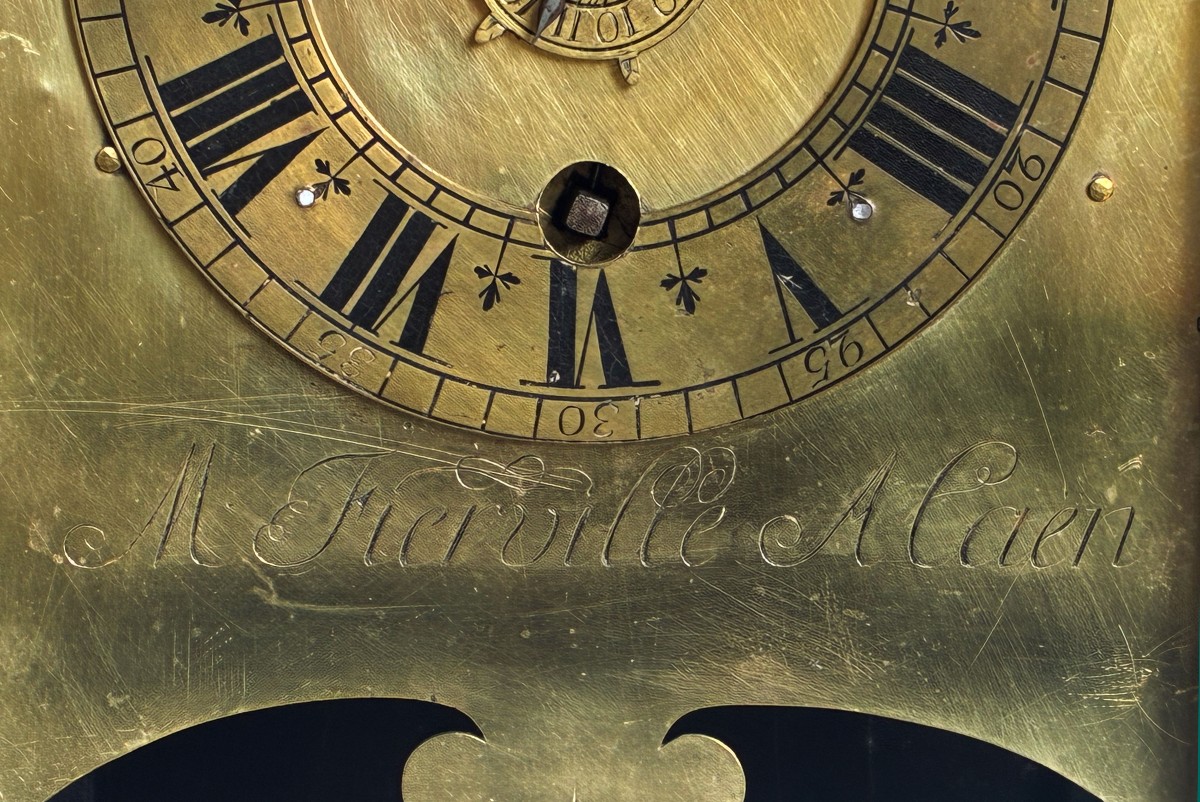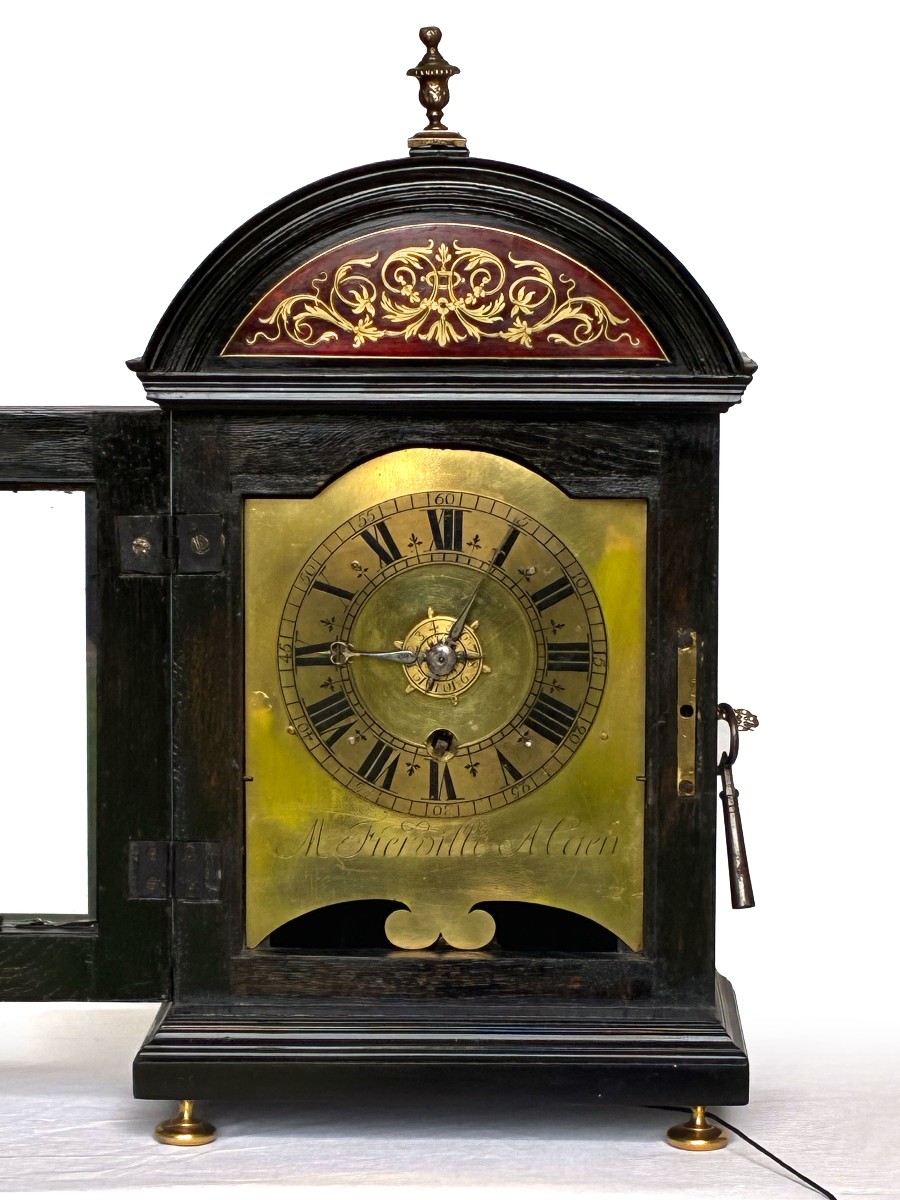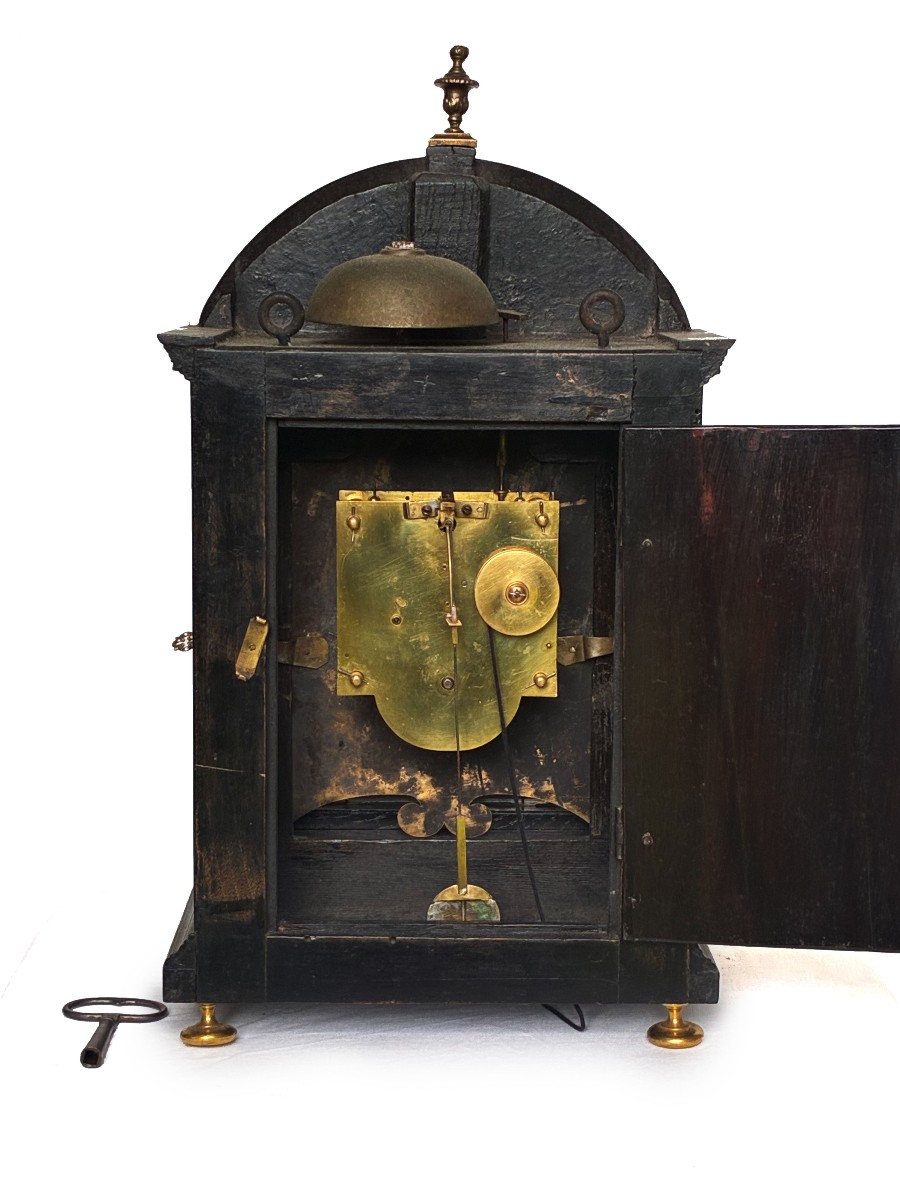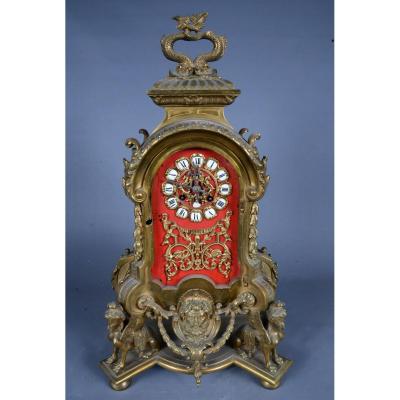The rectangular case is veneered with ebony and is surmounted by an arch pediment with an urn bronze finial . The fronton is typical of baroque style reminiscent of the first Haage clocks from early 18th century period. The front case part inclusive of the door are adorned with very fine bronze inlays Boulle type marquetry over red colored turtle shell...
The movement is driven by a single barrel and has a duration of two weeks and the plates are fitted together by means of well turned baluster pillars. It is being regulated by a verge escapement in combinaison with a silk suspended pendulum. The alarm mecanism is located at the rear of the movement and is activated by pulling a string at the back of the mecanism. The alarm setting is done using the front circular disc.
By the beginning of 18th century Michel Fierville was having the full responsability of commissionning the monumental clock with Gautier of the Saint Étienne church in Caen that was achieved in 1744 (Guillaume le Conquerant were buried there)
Fierville was known for using the best bronze goldsmiths in PARIS like Saint-Germain. Some of his clocks are on display in the Musée des Arts décoratifs in Paris.
Dimensions : 41 cms/22.5 cms/12.5 cms
































 Le Magazine de PROANTIC
Le Magazine de PROANTIC TRÉSORS Magazine
TRÉSORS Magazine Rivista Artiquariato
Rivista Artiquariato